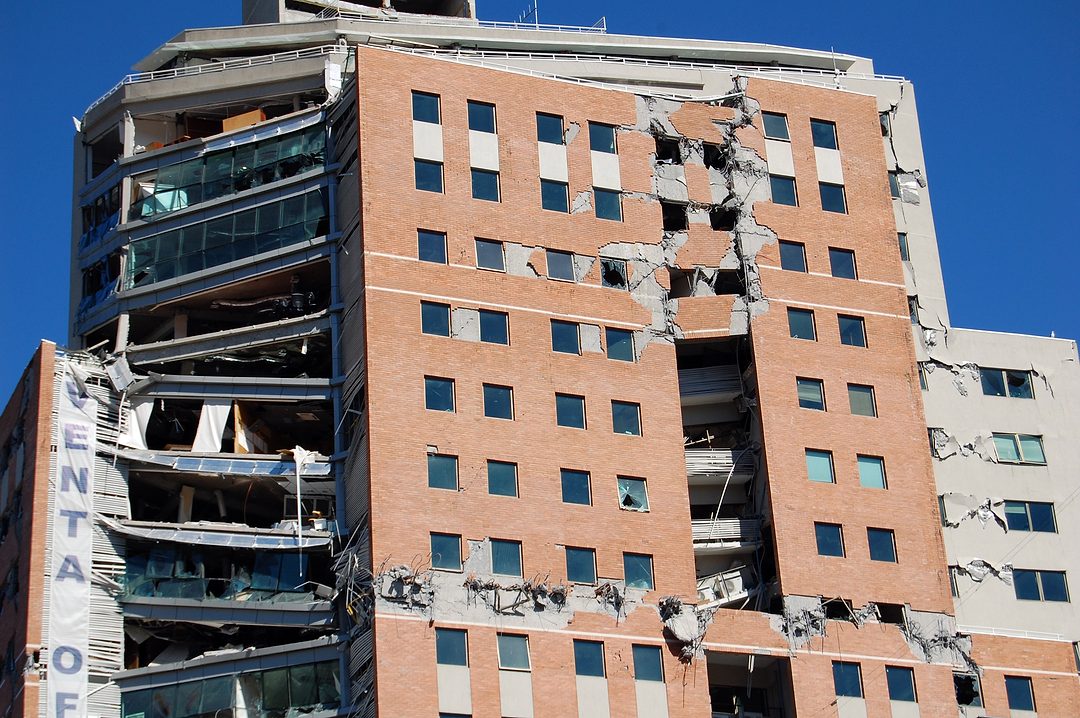Seismic Requirements on the Move
Following an earthquake event, fire protection systems must work with the expected reactions of the building to stay operational.

Following the news today, you are bound to hear about natural disasters, from forest fires to hurricanes to floods to earthquakes. The increase of events globally and awareness of these types of events is certainly on the rise.
How do these events impact fire protection systems? Many natural events do not directly impact the systems used for fire protection as they are protected by a building structure. For example, the fire sprinkler system will not feel the wind from a hurricane unless the building envelope fails.
Earthquakes are the one event that mechanical systems, including fire protection systems, can feel even with the building protecting them. Therefore, requirements have been in place for fire sprinkler systems since the 1947 edition of NFPA 13, Standard for the Installation of Sprinkler Systems.
Of course, NFPA 13 has never been the document to tell you when to apply the requirements, but having guidelines when called for by the building codes or other authorities has been useful to contractors and the industry. Currently, other systems also include water-filled piping that adopt the requirements found in NFPA 13, such as NFPA 14, Standard for the Installation of Standpipe and Hose Systems, and NFPA 750, Standard on Water Mist Fire Protection Systems.
Through the years, the requirements for seismic protection have been modified, not unlike other requirements for system installation. For about 50 years, the changes seen to the earthquake requirements were based on field events. If there were no seismic events to show the performance of the criteria, then the rules were modified very little in that cycle.
21st Century Changes
Circa 2000, major changes were made in the information, approach and forces for earthquakes in the building codes and supporting standards, such as the National Earthquake Hazard Reduction Program Provisions (NEHRPP) and ASCE/SEI 7, Minimum Design Loads for Buildings and Other Structures. This meant NFPA 13 criteria needed to be correlated so that the system and building work together when there is ground motion and the system can remain operational (a requirement for life safety systems).
Changes began with tentative interim amendments to NFPA 13 for the 2002 edition, with more refinement and true incorporation of these into the 2007 edition.
Now that those who are in areas subject to earthquakes are comfortable with the processes, including force calculations and details around the load capacities for the bracing components, things are getting shaken up again. We all know change is inevitable, but in general, no one seems to look forward to it.
ASCE/SEI 7-22 (the 2022 edition of the standard) made some changes to how we use the ground motion values, along with updates to those values. It incorporates that into building design and nonstructural components, including mechanical systems.
In the new edition, the ground acceleration maps are no longer printed in the document; key design parameters are found in the free online ASCE 7 Hazard Tool (https://asce7hazardtool.online). Users can input the address, latitude and longitude or pick a location on the map. Then the user needs to input the risk category and soil class (which has a default setting). The last item is to select which design values you are seeking: wind, seismic, ice, snow, rain, etc.
A major change to this edition is the soil classification. The methodology to determine soil class is more complex than earlier editions and best left to geotechnical specialists. Yet, the information is needed for the building, which means it should be available. A new piece to the soil classification is more categories than previously. Education will be key to ensuring understanding and correct application of the new guidelines.
Now, more than ever, coordination between building codes and their reference standards is needed. The 2024 International Building Code (IBC) has a proposal to adopt ASCE/SEI 7-22. There is another proposal for the IBC to adopt the 2022 NFPA 13. (Many other documents are proposed to update the edition referenced, too.)
Updating to new editions of reference standards is typical during a revision cycle. Yet when more than one reference standard is newly published in the same year, there can be challenges aligning the information, especially when significant changes are made to design concepts.
So, what do these changes mean for fire sprinklers and similar systems? The NFPA 13 Technical Committee on Hanging and Bracing of Water-Based Systems has a task group exploring just that. The only conclusion I can offer (at the time this column was written) is change is coming. The committee is examining the details with respect to possibly publishing a tentative interim amendment (TIA) to 2022 NFPA 13.
Beyond a TIA, the revision cycle for the 2025 edition of NFPA 13 will begin this July (public input for first revisions closed on June 1, 2022), allowing for alignment of the seismic requirements for fire sprinklers with those of the structure. Remember, the goal is for the system to remain operational following an earthquake event; the best way to reach it is for the system to work with the expected reactions of the building. l
Victoria Valentine, PE, is the director of engineering and technical services for the American Fire Sprinkler Association. Victoria is a licensed professional engineer who has expertise with fire sprinkler systems and earthquake protection for mechanical systems. She has served on the NFPA Technical Committee for Hanging and Bracing of Water-Based Fire Protection Systems for more than 20 years and the ASCE 7: Minimum Design Loads and Associated Criteria for Buildings and Other Structures Committee since 2006.





